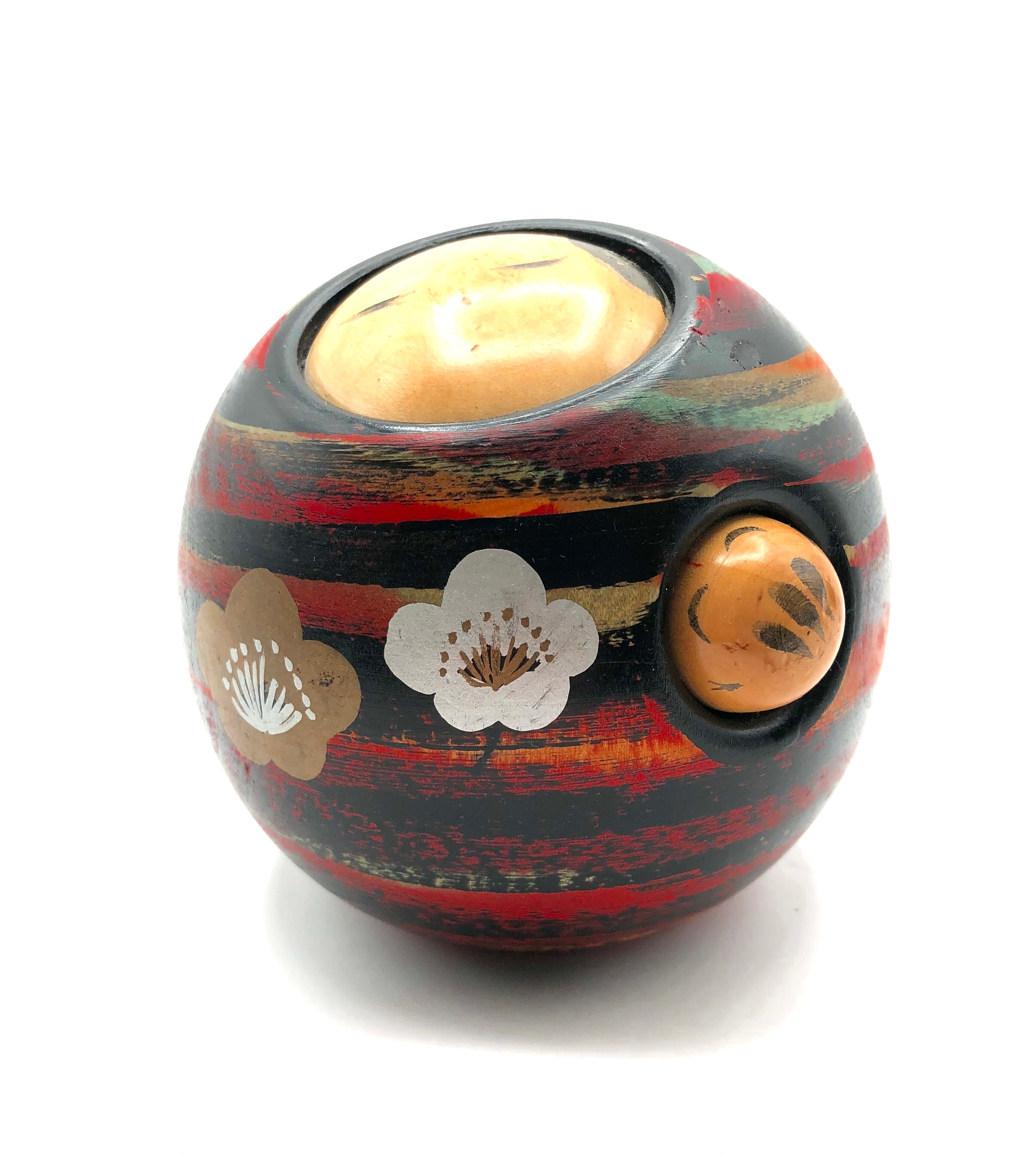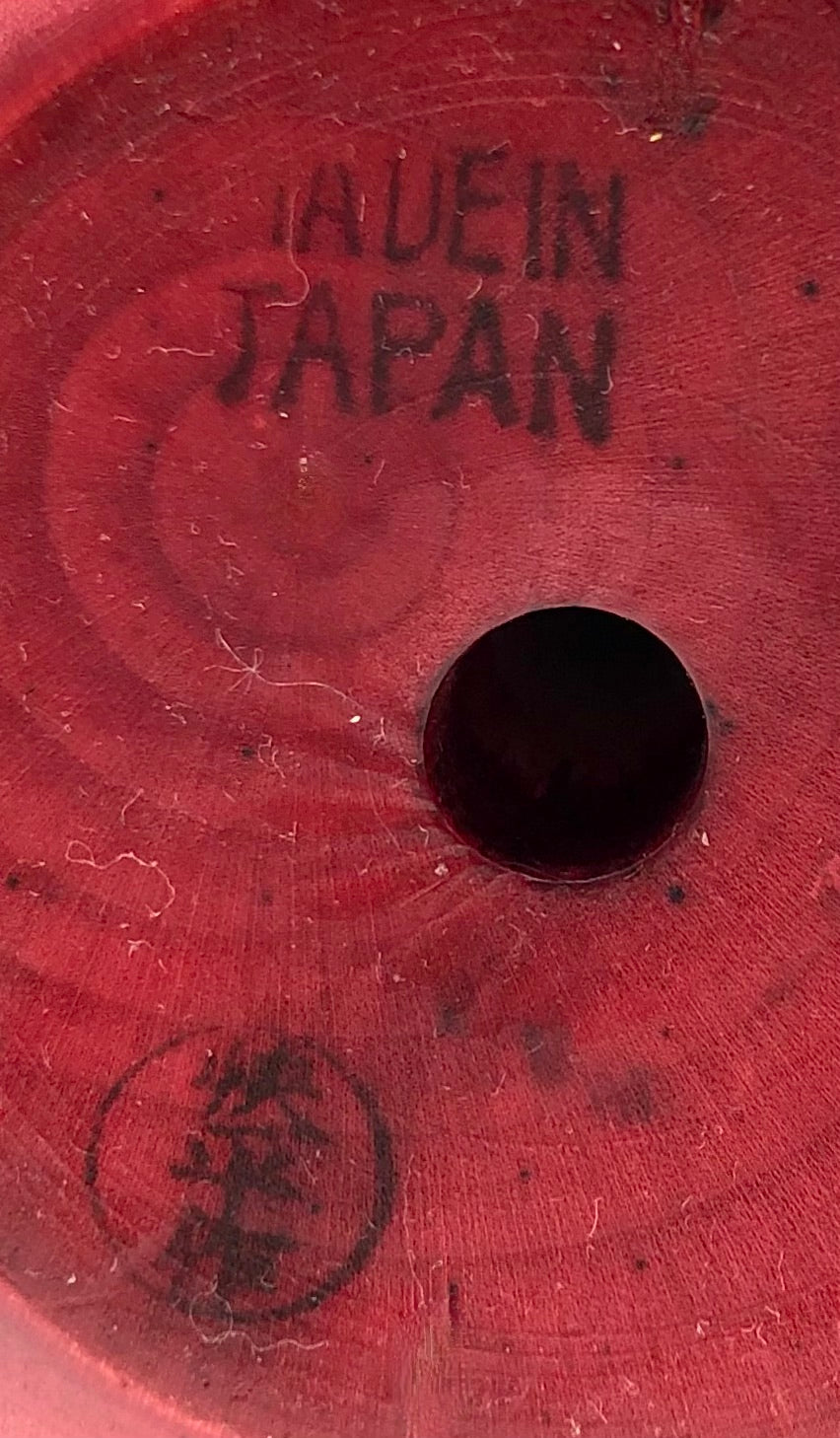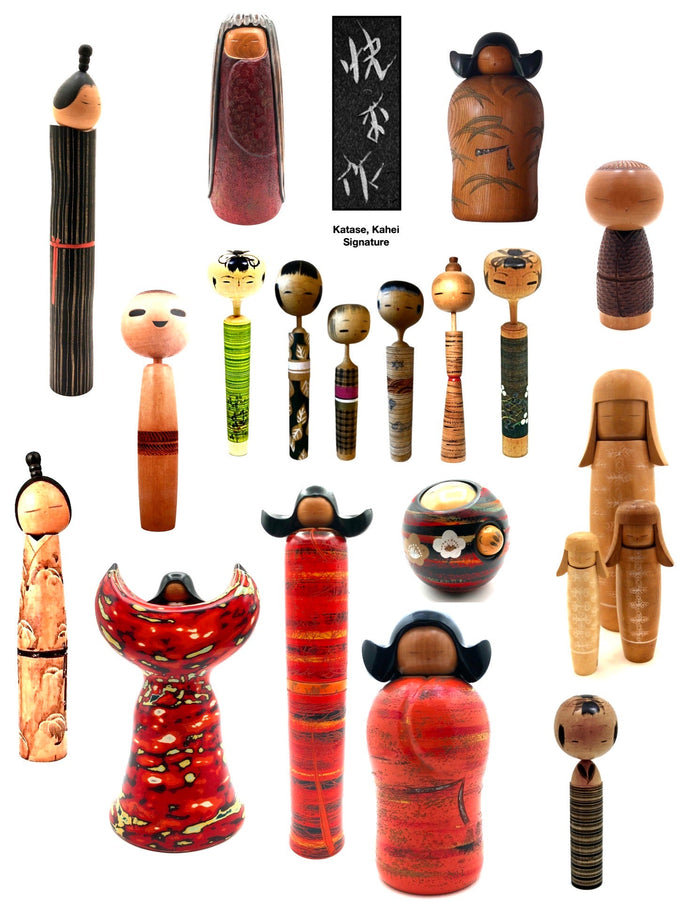


Vintage Sosaku Kokeshi entitled: “Okāsan to kodomo | Mother and Child” by Katase, Kaihei (1921-2015)
Dimensions: 4-1/4” dia.
A typical theme by a few Kokeshi artists is that of either the mother with child or the infant in the arms of the Oshin, (Baby Sitter). Japanese mothers are known for proactively predicting the needs of their children, making the prevention of fuss a high priority. The babysitter was a trusted and essential part of the Japanese family who gave assurance that each child would be lovingly cared for throughout the day.
This wonderful, rotundus doll was made to exemplify this relationship between the figures, expressing serenity and stability. Here we see the adult face peering out from under a blanket wrap called a “Kakumaki”, which is a winter shawl. Her loving eyes and hair, pulled back, along with the head of the baby with a few tufts of hair, is looking up to the mother/Oshin. Both heads are three-dimensional which are separate elements in the design. The body of the doll is covered in festive strips of multiple colors, with one silver and one gold cherry blossom on the front. The doll has both Katase-san’s “Hanko”, (impressed personal stamp), and a notation, “Made in Japan” which means the piece was made for export and most likely made between 1945-1952.
The piece was also included in the 2022 publication of Sosaku Kokeshi: Celebrating the Major Artists of the Creative Movement. For more information on this artist go to the following link: https://mingeiarts.com/collections/artisan-woodworker-katase-kahei-1922-2015.
Condition: Outstandingly excellent, impressive, and heartwarming. No chips, cracks, breaks, missing pieces, or restoration, and retains its original details and finish. The piece meets all the standards of the vintage collectible Sosaku Kokeshi by Katase, Kaihei.

Artisan
Woodworker: Katase, Kahei
1922-2015
Biographical History:
Katase-san was born in Kanazawa prefecture in 1921 in a region known for its beautiful wooden marquetry crafts. Katase-san, the son of a Kijishi, (woodworker), began making creative Kokeshi in 1946. He won the first Prime Minister’s Award in 1954 at the ‘All Nippon Kokeshi Competition’. Along with many of his fellow Sosaku artists, Katase-san was a soldier and perhaps turned to creative Kokeshi-making to assuage the rigors of a long-fought war. Since 1962, he served as a judge at the Kokeshi Contest in Japan. In 1955, his work was dedicated to Her Majesty the Empress. In 1970 he was awarded the holder of Excellent Technique and was named a member of Meiko-Kai. He went to the United States in 1973 to direct the overseas exhibition in St Louis, where he was introduced through a television program at Missouri State. He was a member of the Cultural Properties Protection Committee of Hakone Town and a member of the Nippon Kokeshi Artistic Handicraft Association.
Collector's note – descriptive qualities, standard characteristics & ornamentation styles:
Many of his pieces are differently treated, with the natural contrasting head, and the natural grooved and stained body. He illustrates obi, inset into the doll with a hemp motif, (In early times, “asa” was an important source of cloth, and hemp leaves themselves formed the basis of a variety of hemp patterns). History tells us that the ‘God of Hemp’ is revered at Oasahiko Shrine in Tokushima. He additionally renders spring with cherry blossoms, wheat, trees, and stars to give character to his dolls. He seems to enjoy the rendering of long flowing unbound hair, (taregami) and details such as the inlay of silver motifs on the body.
And finally, it is unusual to see a doll made of three bulbous forms that compose the body and head, utilizing different woods to express the desired detail.
Katase focuses on what is known as “one-off” dolls turned from one piece of wood and detailed throughout the figural form. They primarily illustrate the “new” styles of Japan of the 18th century when the Dutch East Indies Trading Company influenced Japanese everyday life and customs. Katase-san is a master of lacquered color finishes incorporated with detailed carving of elements in the natural environment. Buddhist figures, which are intricately carved, are another style by this artist.
Explore & Learn More about Woodworker: Katase, Kahei